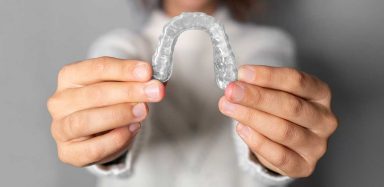Keeping Your Teeth in Tip-Top Shape
Teeth play a very important role in our overall health. For example, not treating gingivitis (the earliest stage of gum disease) can lead to heart and heart valve problems. That’s why going to your dentist for regular checkups and cleanings is important. Another problem that can happen with our teeth is cavities and tooth stains. While tooth stains don’t look nice, they can be reversed with different solutions. Cavities, on the other hand, are irreversible and have to be dealt with by a dentist. But how do you tell the two apart, and what can be done about them? Let me fill you in below about cavity vs stain.
What is a Cavity?
Cavities, also known as tooth decay, are exactly what you would think they are. They are permanent damage to your teeth; this means that the damage cannot be reversed, and treatment by a dentist is needed to prevent further decay.
There are four different stages of a cavity: decay in the tooth enamel, advanced decay, decay in the dentin and decay in the pulp. The last two stages are very painful because the cavity has created a tooth hole that now irritates the tooth nerve ending.
Cavities can make a tooth very sensitive to hot and cold beverages due to the tooth hole exposing the inner tooth and nerve to things they are not normally exposed to.
What is a Tooth Stain?
Tooth stains, unlike cavities, do not cause permanent damage to your teeth. Instead, they cause what is known as cosmetic damage. They don’t look nice, but there are things that you can do to reverse them, such as using teeth whitening kits. The best way to tell a stain and a cavity apart is that cavities tend to have a sticky feeling, whereas stains do not.
What Causes Cavities and Stains?
Both cavities and tooth decay are caused by bacteria in the mouth, not cleaning the teeth properly and sugar. However, cavities can also be caused by mouth diseases, poor diet, dry mouth and not booking regular appointments with the dentist.
Staining of the teeth on the other hand can be caused by things like:
- Smoking.
- Drinking lots of coffee and tea.
- Certain alcoholic beverages like wine.
- Eating apples or potatoes a lot.
- Certain antibiotics.
- Aging.
- Genetics.
Related Search Topics (Ads)
How Can You Prevent Cavities or Staining?
To prevent tooth decay or tooth stains you can limit or avoid drinking coffee, tea, sodas and wine. You can quit smoking if you already do. Limiting your consumption of sugary foods and beverages will protect your tooth enamel from stains and cavities.
You should also make sure you visit your dentist every six months for a dental cleaning. While at your appointment, you can ask your dentist if you’re brushing your teeth properly or how to brush your teeth in the best way to prevent cavities and stains.
Ensuring that you have a proper dental hygiene routine in place will help you to avoid both. Doing things like using an electric toothbrush, toothpaste with fluoride and whitening and flossing regularly will help.
Reversing Tooth Staining
Everyone will inevitably have to deal with tooth stains at some point in their life as they are nearly impossible to avoid. So, what can you do to reverse them?
Well, teeth whitening products have been on the market for a long time. Here are some easy products to start with:
- Tooth Whitening Toothpaste.
- Tooth Whitening Strips.
- Tooth Whitening Pens.
- Liquid spot whiteners.
- At Home UV Light Whitening Kits.
You can also try a cosmetic tooth whitening procedure outside of these handy at-home products. Dental clinics and even cosmetic boutiques offer different tooth whitening procedures to get your teeth back to a glowing white without damaging the enamel.
Dealing with Cavities
If you think you have a cavity, there is only one option to fix the problem. You will have to visit your dentist for them to repair your tooth with a filling.
While it may seem scary to have a filling done, the procedure is quick and almost entirely painless.
First, the dentist uses a small needle or cream to freeze the nerve in your tooth to prevent pain.
Next, they clean out the decayed part of the tooth with a tiny drill; this prevents further decay and keeps the area free from any more tooth-eating bacteria.
Finally, they fill the tooth hole with a strong product that will keep the tooth protected from any more damage.
While it can seem scary to get a cavity filled, it’s a simple and quick procedure. But if you don’t want to deal with the hassle, you’re better to take preventative measures so that a cavity doesn’t happen in the first place.

